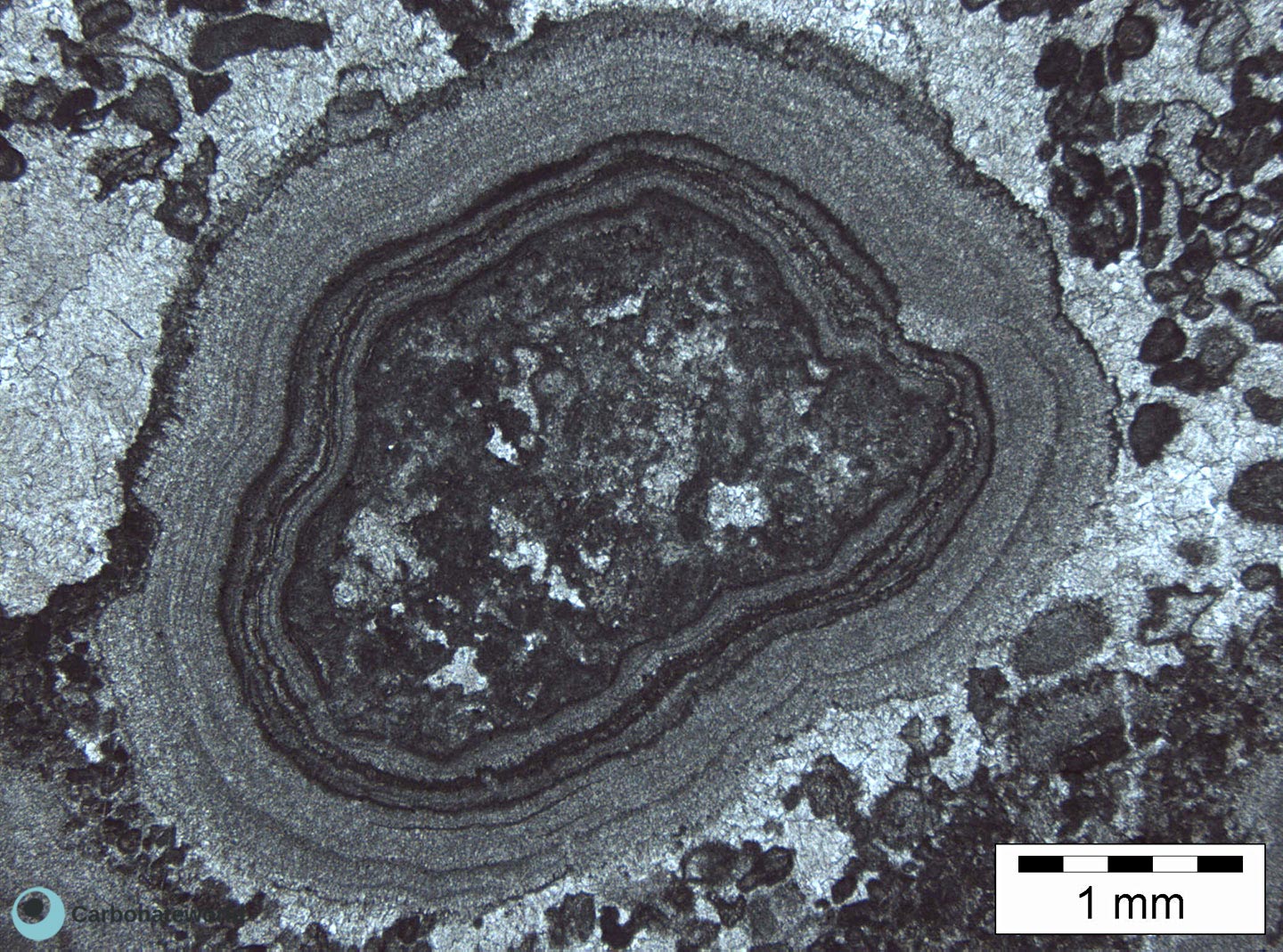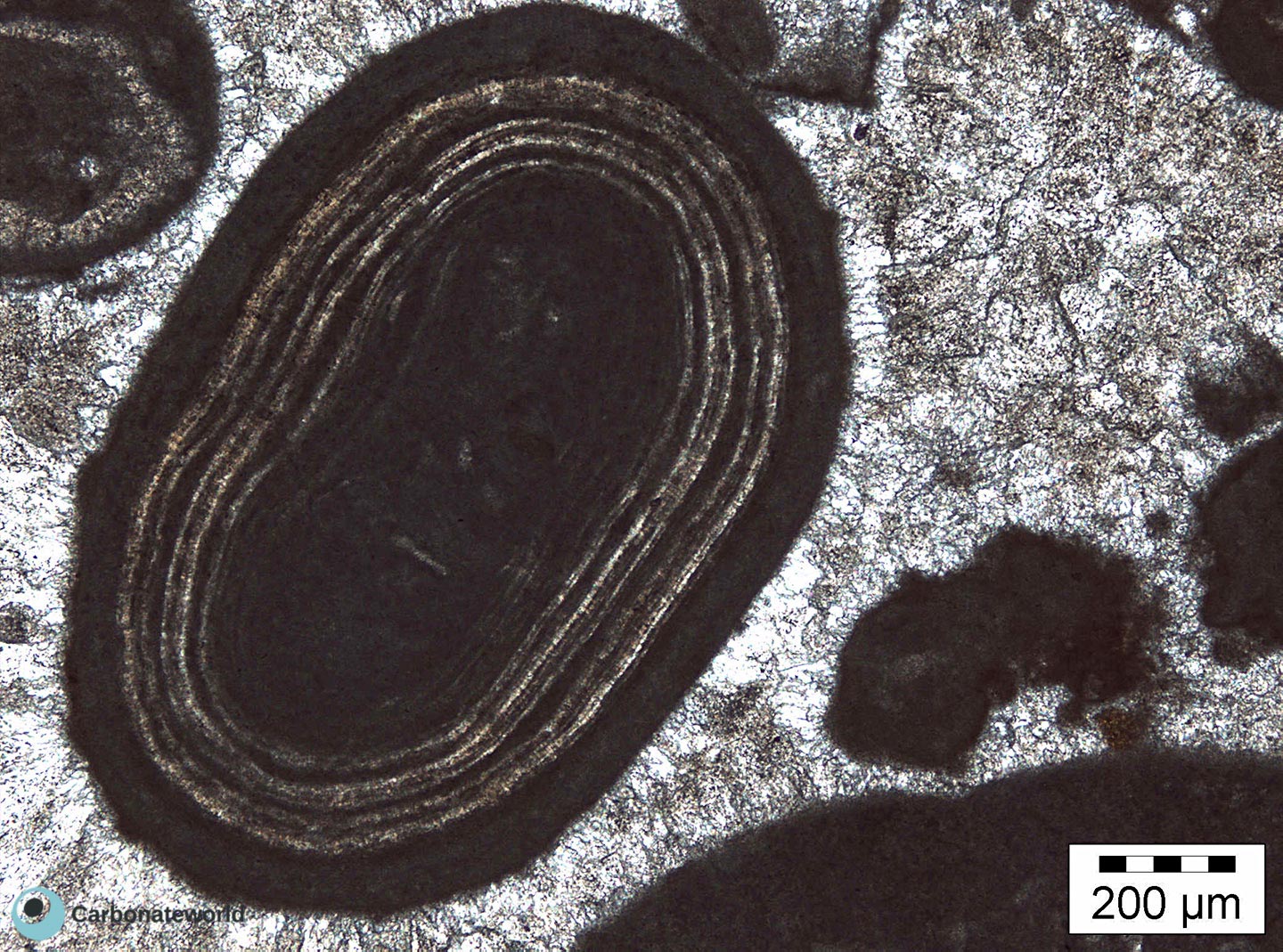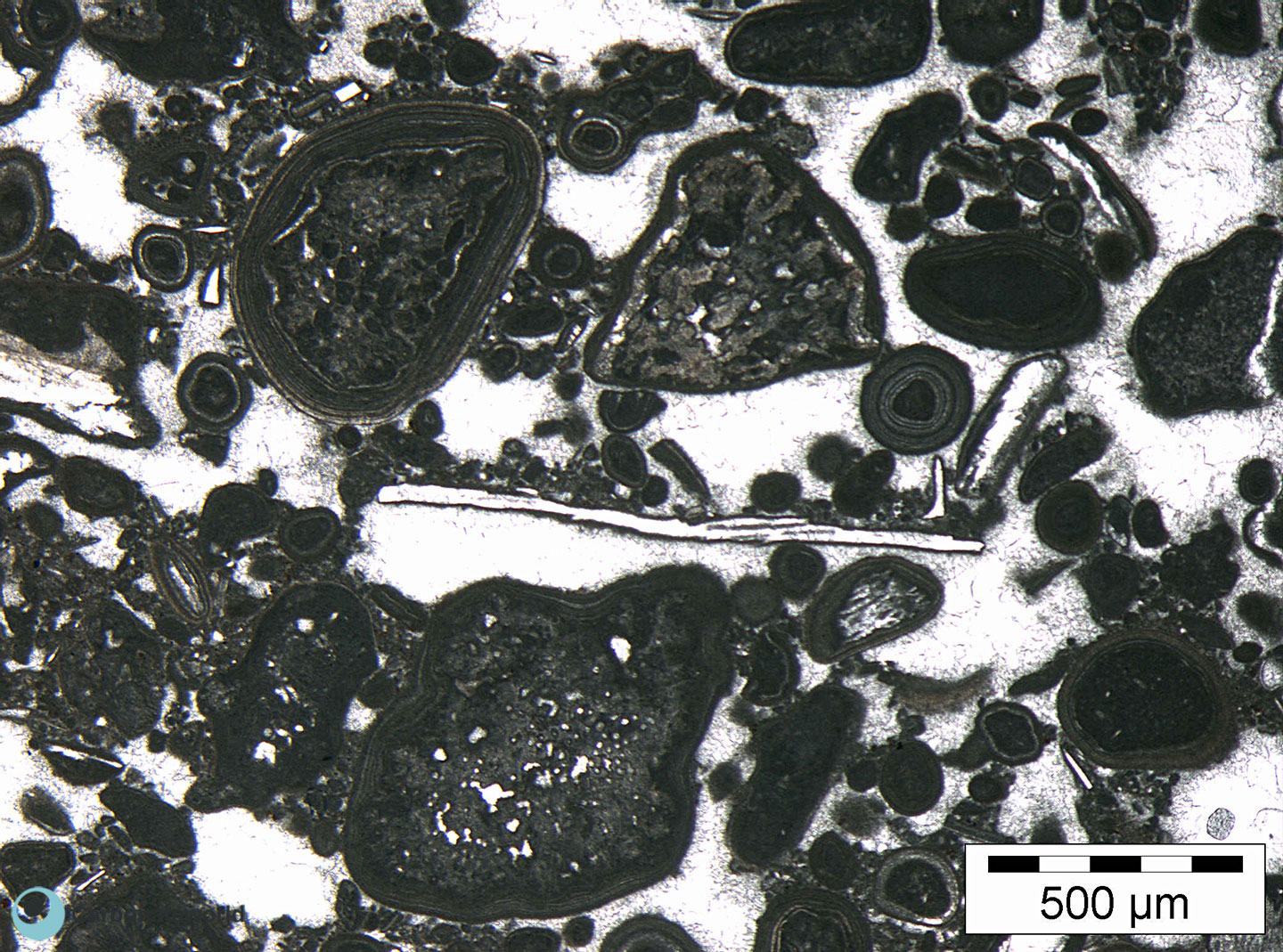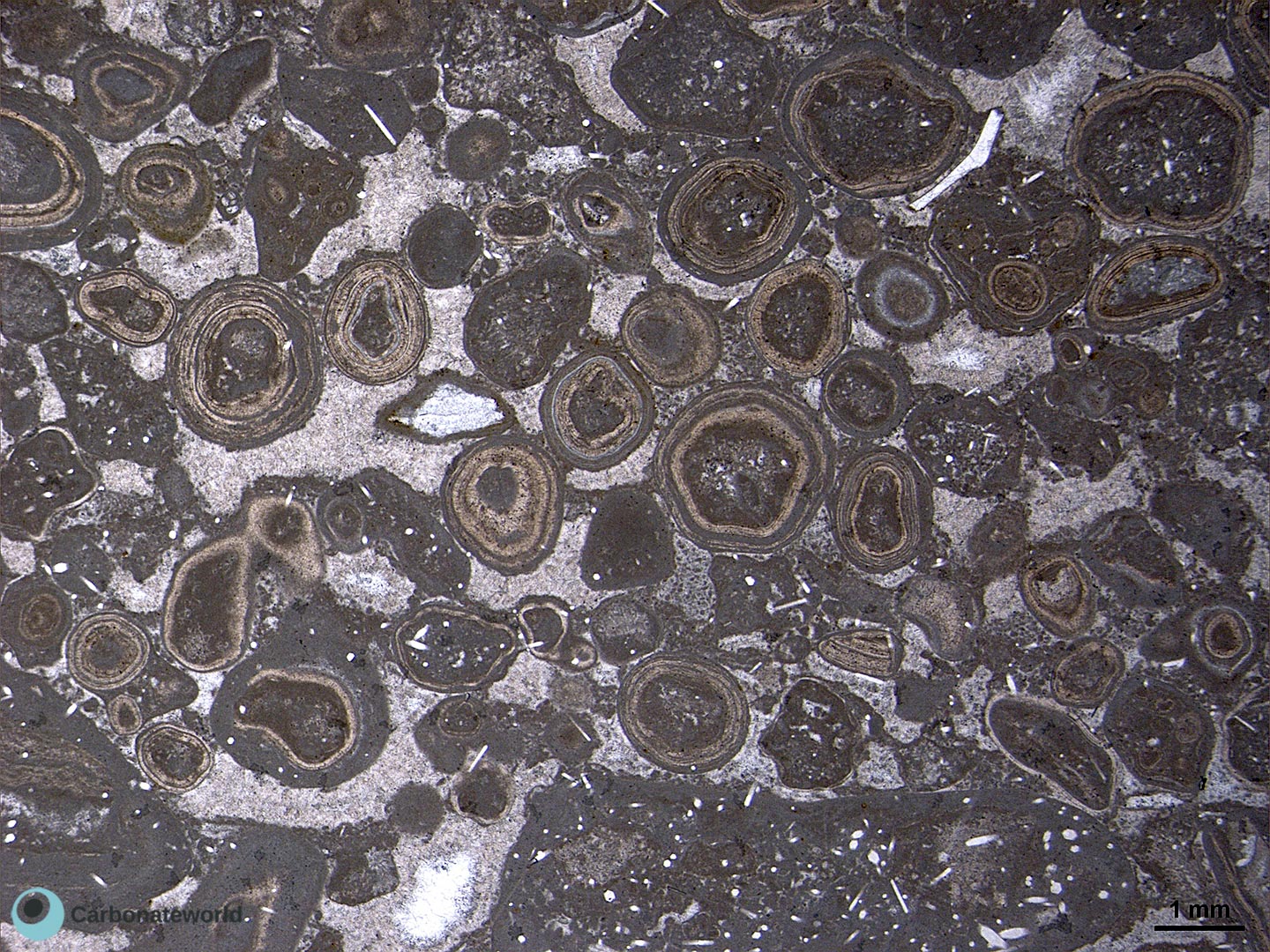Pisoids
1. Pisoids
Pisoid formed by thin micritic concentric laminae around an intraclast, possibly formed in a subtidal to intertidal environment.
Permian, Capitan Reef, New Mexico, USA

HIDE INFO

SHOW INFO
2. Pisoids
Regular concentric laminae, first hyaline and then dark micritic.
Lower Jurassic, High Atlas, Morocco, cf. Verwer et al. (2009a)

HIDE INFO

SHOW INFO
3. Pisoids
Grainstone with pisoidal coating around intraclasts and fenestral porosity (keystone vugs) in intertidal environment.
Lower Jurassic, High Atlas, Morocco, cf. Verwer et al. (2009a)

HIDE INFO

SHOW INFO
4. Pisoids
Grain- to packstone containing pisoids and an intraclast of pisoidal packstone with meniscus micrite binding deposited in intertidal to vadose setting.
Lower Jurassic, High Atlas, Morocco, cf. Verwer et al. (2009a), Merino-Tome' et al. (2012)

HIDE INFO

SHOW INFO
5. Pisoids
Pisoidal grainstone with meniscus micrite cement in intertidal to vadose conditions.
Lower Jurassic, High Atlas, Morocco, cf. Verwer et al. (2009a), Merino-Tome' et al. (2012)

HIDE INFO

SHOW INFO
6. Vadose Pisoids
Grainstone to packstone consisting of vadose pisoids bound by micritic meniscus cement.
Lower Mississippian, Shunda Formation, Alberta, Canada

HIDE INFO

SHOW INFO
IMAGE INDEX



pisoidal coating

peloidal intraclast at nucleus


pisoidal coating


pisoid


pisoid

intraclast of pisoidal packstone


pisoid

vadose meniscus micrite
